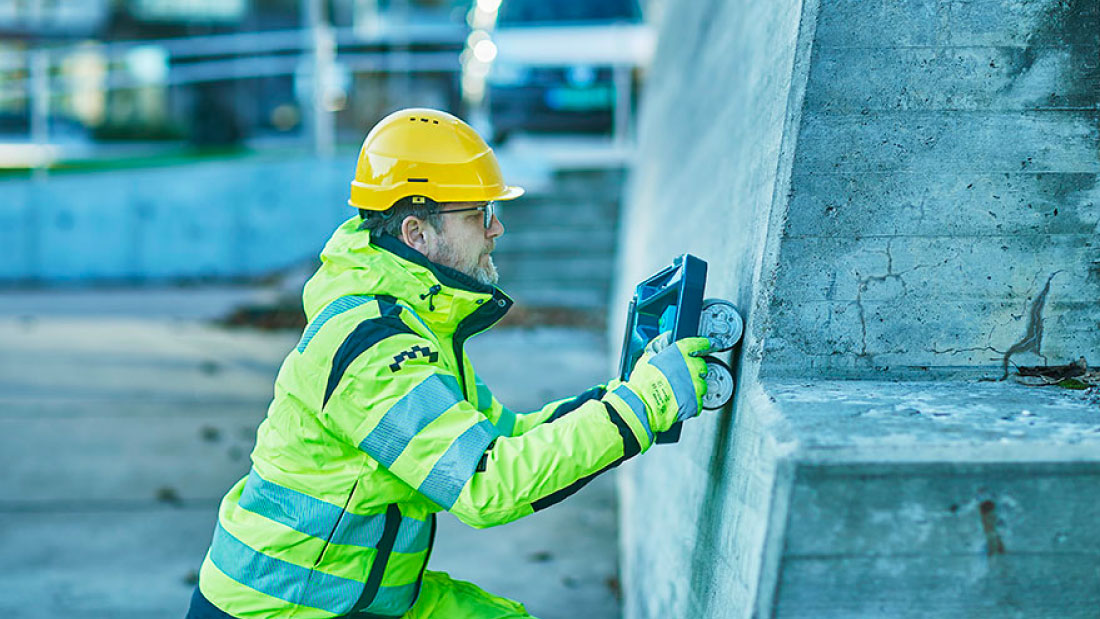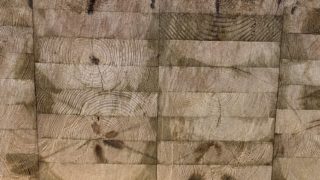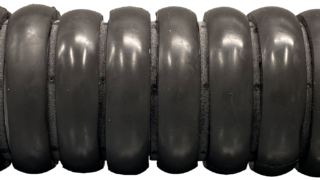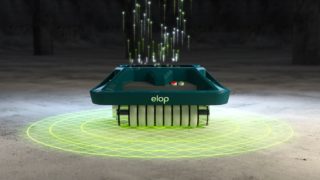There is a shift towards devoting more attention to the condition of concrete structures.
We can finally give concrete the attention it requires. New ultrasound technology reveals, with unprecedented precision and efficiency, what lies beneath the concrete surface. That is good news for the inspection industry, due to the growing need for in-depth assessment of large concrete structures.
As the built infrastructure grows older, the need for detailed understanding of its condition and safety increases. In Europe and the US alone, that goes for thousands of large concrete structures like bridges, tunnels and dams built in the 60’s and 70’s. They are reaching their expected lifetime. Many of them have even reached it already and are closed by the authorities, awaiting replacement.
This situation, together with an urgent need to lower the environmental impact of concrete, drives the current trend towards devoting more attention to the condition of concrete structures. We need to put concrete under intense scrutiny.
Growing demand for tools
Niklas Persson, ELOPs head of international sales and a 25+ years Non-Destructive Testing veteran, predicts a growing demand for tools to assess the condition of large concrete infrastructures.
- If you look at large infrastructure items made of steel, we have good knowledge of them. For decades we’ve been able to inspect and monitor for instance steel bridges. But when it comes to concrete structures, we’re not that well informed about their condition. That needs to change, for safety reasons as well as sustainability reasons.
As an example, Niklas highlights the upcoming regulations for nuclear power plants in Europe.
Biological concrete shield
Many plants were built back in 70s and early 80s. Regarding maintenance and safety, the inspection focus since then has mainly been on the reactor and all the auxiliary systems. Efforts were focused on steel structures, pressure vessels, piping and welding etc., and over the decades these inspections and tests have led to continuous repairs or replacement of equipment, and even major effect upgrades.
But the concrete shell of the reactor has not received the same attention, although it’s the biological shield keeping radiation contained if anything should happen. The same goes for reactor cooling pipes, towers, and other essential parts of the plant made of concrete.
Now, finally there is a new set of official guidelines coming up in several nuclear nations, which will require asset owners to focus on the concrete parts of their plant. According to Niklas, when these new guidelines become effective, plant owners will be required to regularly inspect and document the condition of their concrete. If non-acceptable defects are found, they must decide how to repair them, or else their plant might face a shut down by the authorities.
- Ultrasound is the answer to this growing need for thorough inspection of concrete. Ultrasound has been around for years, but with the ELOP Insight scanner it’s finally ready to grow from being a niche tool to taking centre stage. Conventional ultrasound tools have been time consuming and difficult to operate. This changes dramatically, with the ELOP Insight being more than 10 times more effective and yielding much more precise images of the defects that can lie beneath the concrete surface.
However, according to Niklas, concrete inspectors will still need a full set of tools. One single device will never be enough, and inspectors may use radar, chemical analysis, visual inspection etc. But with its ability to detect cracks, voids, delamination and even rebars. in a depth up to 2 m, and its ability to produce real-time 3D-imagery of the inspected areas, the ELOP Insight will be the most efficient and comprehensive tool in the toolbox.
Quality Assurance
According to Niklas, the shift towards devoting more attention to the condition of concrete structures will also influence the priorities of asset owners when tendering a new bridge, tunnel or dam. He predicts that in the future, tenders will include ultrasound scans of the new structure.
With it you can create the full digital image of a new asset before it is put into use. This data set can then be fed into an Asset Monitoring System and serve as baseline for the asset.
After e.g., a bridge is built, it falls into a periodic inspection program, and every 5 or 10 years or so a new scan will be carried out. You then take the new 3D-images and compare them with the previous ones to see what changes are affecting the bridge. Have minor defects evolved, and do we need to take action to prevent a potentially critical situation? Or do the defects we’ve found in the new scan retain the exact same shape, length as in earlier scans? If so, there shouldn’t be anything to worry about.
Data is essential in all this. The more precise information you can provide to the concrete engineers calculating the strength of your bridge or tunnel, the better you can maintain it and thereby prolong its lifetime.
Italian certification
Furthermore, Niklas points to Italy, to support his claim that ultrasound is on its way up.
Italy is one of the first countries in the world to put a certification procedure in place, targeted towards ultrasound technicians for concrete inspection. The certification is like what is required for inspectors within non-destructive testing methods for steel, and Niklas predicts that other countries will follow and head in the same direction. He sees change coming, and it’s driven by technology.
- People realize that suddenly you can inspect concrete in a completely different way than before. But to get the best out of new technology you must be sure the operator of the equipment knows what he or she is doing. That drives the trend towards training and certification, and that is a good thing, It’s a quality stamp.
Higher accuracy
According to a whitepaper analysing the ELOP Insight technology, written by Prof. Dr. Björn Täljsten, an expert in condition assessment of concrete structures at the Luleå University of Technology, the scanner delivers higher accuracy compared to other techniques and methods supported by devices available on the market, and with a significantly shorter time-to-result.
Furthermore, Dr. Täljsten highlights, that being a rolling device the ELOP Insight scanner requires minimum physical effort to handle:
- Its straightforward interface has the advantage of relatively short training required to master the device, even for relatively new users, allowing them to focus on the inspection, rather than being occupied with proper operation of the device.
- Furthermore, given the unparalleled productivity that is achieved due to the working (rolling) principle, as well as high-speed scanning, for the first time ever, it is possible to perform inspection on nearly 100% of the asset area. This unlocks the potential for covering the maximum surface area ensuring a high probability of detecting all suspicious areas that can be scanned again with high-resolution mode to obtain more details.
Dr. Täljsten finds that the ELOP Insight scanner is a great replacement for many of the currently used NDT techniques, making the whole process of the evaluation simpler, more effective, and less prone to human-related errors and mistakes.
- Immediate 3D visualization and the rolling principle of the scanner along with fully digital workflow make the ELOP Insight solution revolutionary, transforming the NDT Inspection market segment. From having been sporadically used supportive technique, it becomes the central one in the assessment strategy.
- Given the amount of data that is collected while scanning, and the way it is being stored, it is a great start for the preventive maintenance and health monitoring not only for a specific asset but also as a predictive statistical mechanism for other assets.
So, to sum it up: ELOP Insight is allowing us to finally give concrete the attention it requires.




